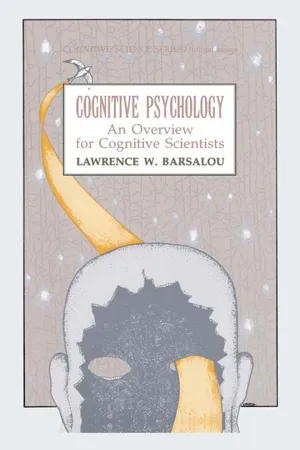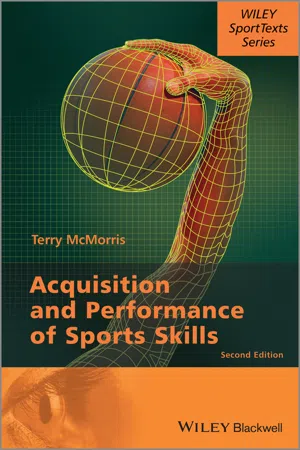Psychology
Long-Term Memory
Long-term memory refers to the storage of information over an extended period, ranging from minutes to years. It is the system of memory that allows individuals to retain and recall past experiences, knowledge, and skills. Long-term memory is believed to have an unlimited capacity and is essential for learning and forming a person's identity.
Written by Perlego with AI-assistance
Related key terms
5 Key excerpts on "Long-Term Memory"
- eBook - ePub
- Jamie Ward(Author)
- 2019(Publication Date)
- Routledge(Publisher)
The general approach of this chapter is to consider different types of memory, how they are implemented in the brain and how they interact. The chapter begins by considering the distinction between long-term and short-term or working memory. The chapter then considers different types of Long-Term Memory and discusses amnesia in terms of this theoretical framework. It then goes on to discuss whether the hippocampus has a time-limited role, whether there are separate neural substrates for familiarity and recollection and the cognitive/neural mechanisms of forgetting. Finally, the chapter discusses frontal lobe contributions to memory.KEY TERMSShort-term memory
Memory for information currently held “in mind”; it has limited capacity.Long-Term Memory
Memory for information that is stored but need not be consciously accessible; it has an essentially unlimited capacity.Short-Term and Working Memory
The labels “short-term” and “long-term” appear to suggest that there could be different types of memory evoked for different periods of time with, perhaps, separate stores for things that happened a few days ago relative to several years ago. This is a popular misconception. It is not how psychologists distinguish between short- and Long-Term Memory. Short-term memory (STM) is defined as memory for information currently held “in mind” and has limited capacity. Long-Term Memory (LTM) refers to information that is stored; it need not be presently accessed or even consciously accessible. The long-term store is considered to have essentially unlimited capacity within the inherent limitations of the brain. According to this definition, memory for things that happened several hours, days or years ago is all stored within the Long-Term Memory.Models of STM and working memory
The influential model of Atkinson and Shiffrin (1968) regarded short-term memory as a single entity that was essential for all long-term learning. Both of these assumptions turned out not to be correct. For instance, if both STM for verbal material (e.g., words) and STM for visuo-spatial material (e.g., routes) use the same limited-capacity system, then it should not be possible to hold both kinds of information in mind at the same time without substantial interference. However, this is not the case (e.g.,Logie et al., 1990), suggesting that there are different kinds of short-term memory depending on the nature of the information being held in mind (e.g., verbal, visual), each with their own limited capacity. Subsequent evidence from brain imaging also supports the view that there are separable systems with different neural foundations (for a review see D'Esposito & Postle, 2015 ). Finally, evidence from neuropsychology suggested that it was possible to have some kinds of long-term learning (e.g., pairing words together) despite impaired STM (Warrington & Shallice, 1969 - eBook - ePub
Cognitive Psychology
An Overview for Cognitive Scientists
- Lawrence W. Barsalou(Author)
- 2014(Publication Date)
- Psychology Press(Publisher)
11.2 ). For now, I simply note that researchers have discovered many important principles of Long-Term Memory from the study of word lists. As I shall argue, memory mechanisms discovered from this approach are probably central to memory for other types of information in other contexts.Before proceeding, it is important to note that researchers have addressed memory for other information besides words. Researchers have addressed memory for visual, auditory, and motor information, and to a lesser extent, memory for tactile, olfactory, and gustatory information (Atkinson et al., 1988a, 1988b; Lawrence & Banks, 1973; Rabin & Cain, 1984; Shepard, 1967). A rapidly growing literature addresses people’s memory for naturally perceived events (e.g., autobiographical memory, eyewitness testimony; Neisser &E. Winograd, 1988; D.C. Rubin, 1987). A literature also addresses people’s memory for thoughts and their ability to distinguish them from actions (e.g., M.K. Johnson & Raye, 1981). Extensive literatures, described in 8.7 , 9.5 , and 9.6 address memory for linguistic units larger than isolated words (e.g., sentences, texts).6.1 ENCODINGTheorists often describe the process of memory in three stages: Information enters the cognitive system through encoding processes; information then becomes stored in memory indefinitely; and information may then be accessed during subsequent retrievals. It is probably a mistake to assume that the architecture of the cognitive system divides distinctly into encoding, storage, and retrieval systems. Nevertheless, these stages may characterize cognitive architecture to some extent, and, most importantly for my purposes here, they are useful for organizing what cognitive psychologists have learned about memory (Crowder, 1976, chap. 1; Melton, 1963).Encoding processes capture information as it impinges on perceptual systems, or as strategic processing produces it in working memory. Categorization, as described in Chapter 2 , is certainly central to encoding. As we shall see, the categorization of a stimulus strongly determines its memorability. However, additional factors not discussed in Chapter 2 - eBook - ePub
- Terry McMorris(Author)
- 2014(Publication Date)
- Wiley(Publisher)
7 MemoryLearning objectives
At the end of this chapter, you should be able to:- define memory
- understand the nature of the sensory information store, short term memory and Long-Term Memory
- understand the differences between declarative and non-declarative Long-Term Memory
- know the brain regions involved in memory
- know the main developmental factors involved in memory.
In this chapter, we examine what, to the Information Processing theorists, is the basis of their theory, namely memory. Tulving (1985) described memory as being the ‘capacity that permits organisms to benefit from their past experiences’ (p. 385). This definition covers all types of memory: verbal, visual, emotional and motor. In this text, we are interested in verbal and visual memory, especially where they aid learning. We are, of course also, interested in motor memory. Motor memory could be described as the ability to consistently reproduce a skill over a period of time. Even ecological psychologists accept that this happens.As well as being broken down into verbal, visual and motor subgroups, memory has been divided into sensory information store, STM, LTM and working memory. We have discussed the nature and role of working memory in decision making, in Chapter 3 , so we will not spend time on it here. Suffice it to say that working memory includes inputs from both STM and LTM. That STM and LTM are different entities is not universally accepted. Evidence that there are differences between STM and LTM comes mostly from studies with individuals who have suffered some form of brain damage. Some patients have demonstrated significant negative effects on STM with no effect on LTM, while others have demonstrated the opposite.Information processing theory and short-term memory
Sensory information store
The sensory information store (SIS) holds all incoming information for a brief time. Most of the information is lost within 0.5 s. It is only retained and processed if it is attended to. The retained information is the selectively attended to stimuli. According to Atkinson and Shiffrin’s (1968) modal model of memory, if this information is to pass to STM, it must be rehearsed. I do not like the use of the word rehearsal, with regard to memory, but we will come across it again. To most people rehearsal includes a physical element. In these terms it does not necessarily, although it could do. Rehearsal really means being attended to, or processed mentally and/or physically. More recent evidence shows that not all attended to information needs to be passed to STM, some is passed directly to LTM. In fact, the ‘attention’ does not even have to be conscious, it can be undertaken at a sub-conscious level. How this occurs is examined in Chapter 8 - eBook - ePub
- G Neil Martin, G Neil Martin(Authors)
- 2015(Publication Date)
- Routledge(Publisher)
Once something has been learned, it enters Long-Term Memory. At the beginning of this chapter, you saw how memory was not viewed as a unitary phenomenon but as a multiple system: there are different types of memory. William James (1890), one of the founding fathers of modern psychology, was one of the earliest scientists to suggest that memory was made up of different systems. He proposed that memory comprised different elements called primary memory (memory for short-term processing) and secondary memory (long-term processing and storage). Over 60 years later, Broadbent (1958) specifically postulated short-term (STM) and Long-Term Memory (LTM) processes in which items from STM would, via specific mechanisms, make their way into LTM. This was a significant dissociation at the time but, like most models in psychology, was later seen to be insufficient in explaining the range of human memory fully although these terms are still used today.The current literature is dominated by dichotomies of memory processes. One dichotomy is represented by declarative memory (Cohen and Squire, 1980), which refers to facts that are accessible to conscious recollection (the facts from this book, for example) and procedural memory, which refers to the skills and automatic operations needed to perform a certain function (e.g. the motor skills required for word processing or riding a bike). Another is between explicit and implicit memory, where explicit memory refers to the process of recalling material that is deliberately learned and retrieved, whereas implicit memory refers to the recall of material that may not be deliberately encoded or retrieved.Declarative memory is similar to explicit memory because it represents the conscious learning or memorisation of material. According to Squire (1994), declarative memory, 'refers to a biologically meaningful category of memory dependent on a specific brain system'. Some forms of memory, however, clearly do not fit the declarative memory description but, simultaneously, do not fit the definition of procedural memory particularly well either. A broader term, 'non-declarative memory', has been used to describe those abilities not fitting the other description (Squire and Zola-Morgan, 1988). This is similar to Schacter's (1987) implicit memory: memory that involves no explicit or conscious intention to learn or memorise (the learning is incidental and another name for this type of memory is incidental memory). - eBook - ePub
Learning and Memory
Basic Principles, Processes, and Procedures, Fifth Edition
- W. Scott Terry(Author)
- 2017(Publication Date)
- Routledge(Publisher)
What is the relationship among the several hypothesized components of Long-Term Memory? Various organizations of memory have been proposed. Tulving (1985) suggests that three of the memory systems form a “monohierarchy” in descending order of inclusiveness: Procedural learning includes within it semantic memory as a subset, which in turn includes episodic memory as its subset. This memory system hierarchy would appear as follows:Priming effects are attributed to still another memory system (or set of systems associated with different sensory modalities) that overlaps both the procedural and semantic memory systems. This other memory Tulving calls the perceptual representation system (Tulving & Schacter, 1990).In a different hypothesized organization of Long-Term Memory, Squire (1987; Squire, Knowlton, & Musen, 1993) divides memory into two major categories, declarative and nondeclarative:Declarative memory can be consciously recalled and reported. That is, we can “declare” these memories. Instructions that explicitly request recollection from memory are accessing declarative memory. Declarative memory includes episodic and semantic memory.Nondeclarative memory is defined by exclusion. It is whatever types of memory that are not declarative. Nondeclarative memory includes procedural skill learning, priming effects due to recent exposure to a stimulus, habit learning, and classical conditioning. Nondeclarative knowledge, as is obvious from its label, is often assessed implicitly and not by direct or explicit verbal recall.Stages of Memory
A second approach to memory separates it into a series of three stages. A memory must first be formed, then retained, and later retrieved. These stages are labeled encoding, storage , and retrieval
Learn about this page
Index pages curate the most relevant extracts from our library of academic textbooks. They’ve been created using an in-house natural language model (NLM), each adding context and meaning to key research topics.




